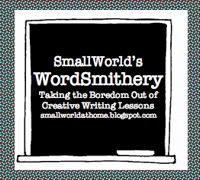Let's start with the meal component celebrating the Father of our Country, George Washington. We didn't go with a food of that time period, but rather a more recent recipe that relates to one of those interesting facts about our first President. Did you know that, on top of fathering the nation and winning the war and being the first President and operating a minor plantation at Mt. Vernon, George Washington ran the largest whiskey distillery in the country at that time? So our main course to remind us of General Washington, was Whiskey Shrimp, which relates both to his whiskey business and the fact that his home was one the Potomac River, from which they caught much seafood (albeit not shrimp) for many a fresh dinner.
I made the dish with a recipe adapted from this one by Brooklyn Plated. This recipe is particularly exciting because you ignite the whiskey and let it burn -- quite a display for our first President! But instead of making it an appetizer and serving it on toasted bread rounds, I served it as a main dish over wild rice. The wild rice paid homage to 3rd President Thomas Jefferson, who was so committed to improving rice cultivation in the Southern states that he smuggled some rice grains out of Italy under penalty of death! You can read about Jefferson's contribution to American rice crops at this article from the Monticello (Jefferson's home) website. We also served that with some raw cherry tomatoes, again in honor of Jefferson, who both grew and ate tomatoes although the prevailing thought at the time was that tomatoes were poisonous, given their close relationship to the belladonna, or deadly nightshade plant.
 |
| GW Whiskey Shrimp over TJ Wild Rice |
We accompanied this dish with Faux Cream of Broccoli soup, our item for the Madison presidency. Actually, James Madison was not that interested in food. However, his wife, Dolley, was quite a social entertainer. She threw many fancy dinner parties at the White House, many of which featured French Cuisine, which was the height of fashion at the time. We figured Cream of Broccoli could represent that trend, since France was famous for cream soups, and broccoli was not commonly grown in the US until the 20th century.
The thing is, my son is allergic to dairy, which is why we made this a "faux" cream soup. Julia Child has a technique for dairy-free cream soup, but it involves rice, which my husband's diabetes seems to be particularly sensitive to. So the secret ingredients in our faux cream soup are (1) potatoes and (2) unsweetened coconut milk, which allowed me to make a remarkably creamy and relatively not-ridiculously-hyperglycemic vegan version of this quite tasty dish. (Of course, back then, people weren't worrying about diabetes and food allergies and veganism. But the point of this exercise is to make some meals that will help us to remember the Presidents without sacrificing our health, not necessarily to create authentic dishes from the time period.)
 |
| Dolley Madison Faux Cream of Broccoli Soup |
We did have a somewhat authentic dish for the Adams presidency. Our dessert was Apple Pan Dowdy, which was supposed to have been one of John Adam's favorite sweets. This, again, we simplified (we were running out of time and energy, so we used pre-made pie dough) and adjusted (we left out the molasses to reduce the sugar content for my husband) from this recipe. But if you don't know, Apple Pan Dowty is basically apple pie cooked in a pan where the top crust is chopped and kind of mixed in with the apple filling. This part of the meal my son made all by himself (we worked together on most of the other parts), and my husband announced it was one of his favorite desserts ever.
 |
| Abigail Adam's Apple Pan Dowdy |
So while our first dinner in this series took some research and preparation time, I would say it was a great success. Now we are working on the next one. Who can remember the four Presidents who came immediately after James Madison?












